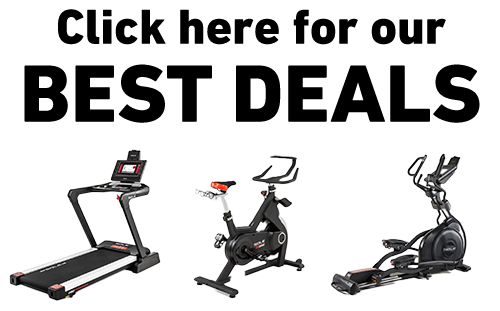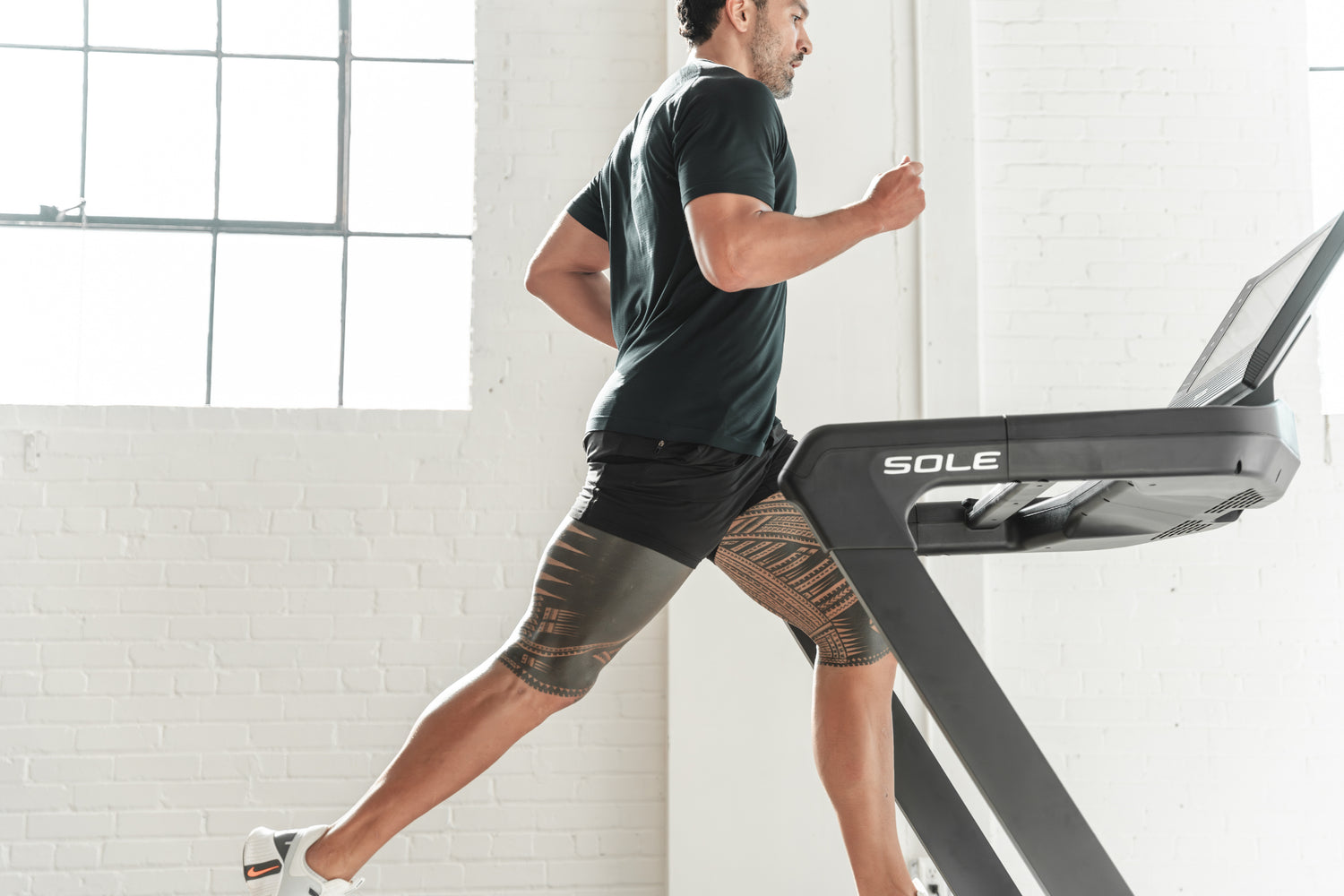Key Takeaways
- Treadmills measure distance through belt rotations.
- Regular calibration is important for maintaining treadmill accuracy.
- Incline settings and belt mechanics can make treadmill miles a bit different from real miles.
- The SOLE F85 treadmill is great for people who need accurate distance tracking.
- Using a GPS watch or apps can help you double-check your treadmill’s distance readings.
How Much Is a Mile on a Treadmill?
Running or walking for miles on a treadmill is a popular goal, but how accurate is that mile? Treadmills measure distance by counting how many times the belt goes around. Let’s see how that works, what affects accuracy, and how to get the most accurate readings.
|
At SOLE Fitness, we're proud to offer the best treadmills for your home or gym. These machines are crafted to meet the highest standards of quality and performance, ensuring they are ideal for anyone - from fitness novices to seasoned athletes. Featured Product SOLE Treadmills: Starting at $1,199.99, SOLE treadmills excel in ergonomic design, durability, and value. Equipped with advanced cushioning to minimize joint impact, powerful, quiet motors, and wide running surfaces, they suit any fitness level. |
 Treadmills use belt rotations to track distance, but factors like slippage and maintenance can affect accuracy.
Treadmills use belt rotations to track distance, but factors like slippage and maintenance can affect accuracy.How Treadmills Track Distance
A treadmill tracks distance by counting the belt’s rotations. Each belt has a set length, and the treadmill counts every time it completes a full turn to calculate distance. While this is generally accurate, things like belt slippage, user weight, and maintenance can affect it.
Why Accurate Distance Matters
Accurate distance readings are important for training. Knowing exactly how far you’ve gone helps you track progress, set goals, and make sure you’re challenging yourself just enough. It also makes other stats, like calories burned, more accurate. If your treadmill isn’t giving you the right distance, it could mess up your whole workout plan.
What Affects Treadmill Accuracy?
Several things can affect how your treadmill measures distance:
Belt Slippage: Over time, the belt might slip, which throws off the distance.
Calibration: Regular calibration is key to keeping distance readings accurate.
Incline Settings: Running on an incline can change how the belt moves, affecting distance.
User Weight: Heavier users might cause more belt slippage, impacting accuracy.
 When your treadmill tracks distance accurately, it makes your entire workout more effective.
When your treadmill tracks distance accurately, it makes your entire workout more effective.
How to Calibrate Your Treadmill
Check the Manual: Follow the calibration instructions for your model.
Access Settings: Use the treadmill’s display to find calibration settings.
Set Units: Choose miles or kilometers.
Finish Calibration: Follow any extra steps to complete the process.
You should calibrate your treadmill every 6-12 months. If you notice the distance seems off or if you use it a lot, calibrate it more often, like every 3-6 months. Regular calibration keeps the distance readings accurate, helping you track your workouts better and keep your machine running smoothly.
Treadmill Miles vs Ground Miles
Treadmill miles might not always match outdoor miles, as factors like incline can make a difference. Treadmills give you a controlled environment, so the distance might be a bit different from running outside—where terrain and weather play a role.
To compare, use a GPS watch or tracking app. They will help you see how treadmill miles stack up against ground miles and adjust your training.
Keep Your Treadmill Accurate
To keep your treadmill’s distance readings accurate, understand how it calculates distance, calibrate it regularly, and maintain it well. Comparing treadmill miles to ground miles can also help you track your progress better. If you want precision and reliability, the SOLE F85 treadmill is a great choice with advanced features and accurate tracking.
Pick Your Precision Powerhouse
SOLE F63: Great for beginners or those on a budget. It offers solid performance and reliable distance tracking.
SOLE F65: Perfect for those who want a balance of features and price. It’s accurate and smooth.
SOLE F85: Best for people who need accurate distance tracking and advanced features. Recommended for serious runners.
Frequently Asked Questions (FAQ)
How Often Should I Calibrate My Treadmill?
It’s best to calibrate your treadmill every 6-12 months. If you notice any issues with the distance readings, try calibrating it more often to keep things accurate.
Can Running on an Incline Affect Treadmill Distance Accuracy?
Yes, running on an incline can change how the treadmill belt moves, which might make distance readings less accurate. Regular calibration can help fix this.
Why Choose a SOLE Treadmill for Accurate Distance Tracking?
SOLE treadmills are known for being precise and reliable. Models like the SOLE F85 have features that help keep distance tracking accurate, which is great for those serious about fitness.
How Can I Check My Treadmill’s Distance Accuracy?
You can use a GPS watch or a fitness app to compare the treadmill’s distance reading with the actual distance you cover. If there’s a big difference, it might be time to calibrate your treadmill.
What Can Affect Treadmill Accuracy?
Things like belt slippage, not calibrating properly, running on an incline, and user weight can all impact how well your treadmill measures distance. Regular maintenance and calibration are important to keep it accurate.



Leave a comment
This site is protected by hCaptcha and the hCaptcha Privacy Policy and Terms of Service apply.